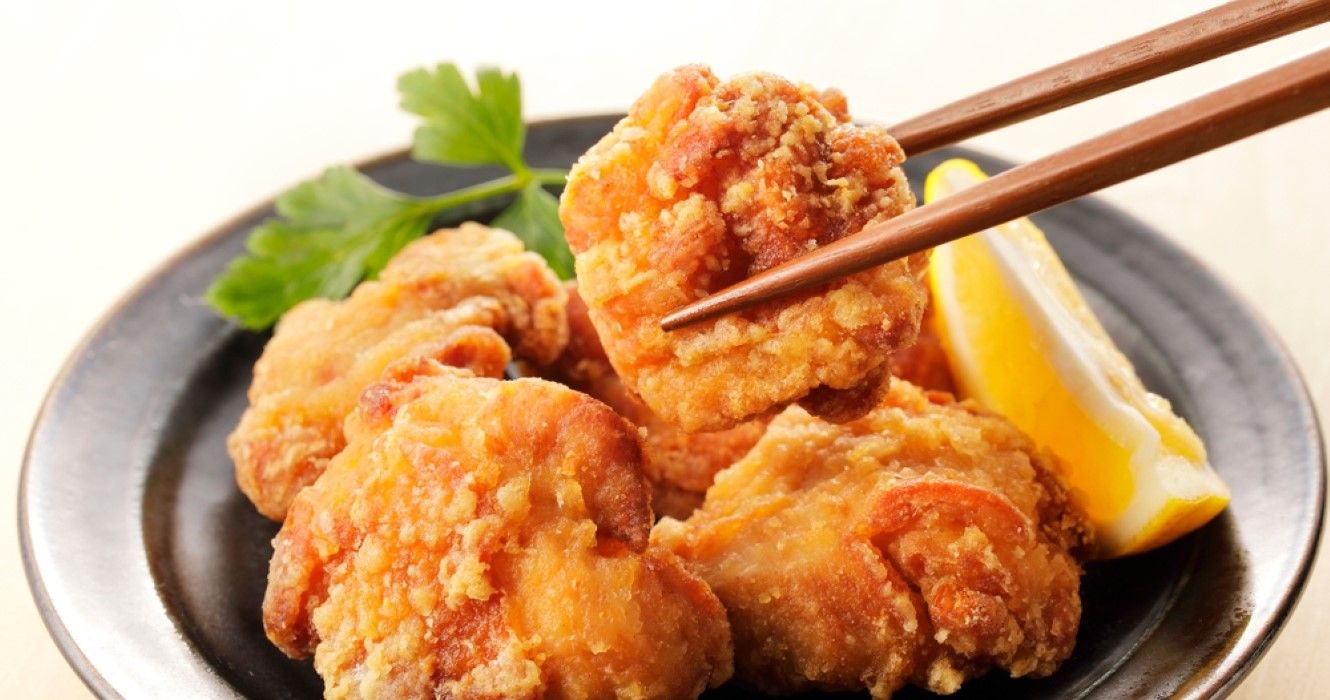Boasting a rich history, the culture of holidays, and iconic festivals, Japan is a land of unfamiliar dishes, with various geographical influences from other countries. From sashimi to sushi and ramen, Japan has food to suit everyone's taste buds. And then there are all the local delicacies that have made their way into Japan with other influences. What are some of those? Here is a list of cuisines to help get a sense of what Japanese culinary holidays are really like.
10 Christmas Cake
Christmas cake consists of a sponge cake with whipped cream topping and strawberries or other fruit decorations. The dessert has become popular in many parts of Japan and can be found at cafes, restaurants, and bakeries across Tokyo. Christmas cakes are traditionally eaten on Christmas Eve. The cake is a part of things that the Japanese took from the West and adapted to suit their needs. They now have entirely different meanings and connotations for Japanese society than they had for the host community from which they were taken. Since its history is entwined with Japan's recovery from World War II loss and subsequent rising from ruins, the Christmas cake now represents commerce and prosperity.
9 KFC For Christmas
In Japan, no food is as popular as KFC during Christmas. There are several theories as to why KFC is uniquely linked to this holiday. Some claim that it’s due to the Colonel's appearance as Father Christmas. Others hint at the fact that foreigners searching for turkey found KFC chicken to be their best option. Whatever it was, the KFC marketing department seized the chance and coined the phrase "Kentucky for Christmas." If tourists wish to enjoy Christmas in Japan this year, it’s good to make reservations earlier because the chicken buckets tend to go fast.
8 Hamaguri-Zushi
Every year on March third, Japan celebrates Hinamatsuri, also known as Girl's Day. It is one of the many traditional annual festivities that date back thousands of years. The celebration honors young girls and includes an exhibition of decorative dolls depicting the Emperor, Empress, and their royal court. Depending on location, several traditional dishes are served during Hinamatsuri ceremonies. Typically, Hamaguri-zushi is a popular meal during this holiday.
7 Super Sweet Mochi
Mochi is a rice cake made from wheat flour. It’s sweet, soft, and chewy. Mochi can be shaped into anything from dumplings and mochi balls to cakes. Visitors might find it at the local supermarket or restaurant or at an event celebrating Japanese culture. Mochi has been eaten for thousands of years in Japan as an accompaniment during drinking parties.
6 Toshikoshi Soba
Like in many other cultures, the Japanese New Year is about starting over. Toshikoshi Soba is a hot, symbolic soup made with soba noodles that is both healthy and simple to prepare. Toshikoshi Soba is traditionally served with only finely chopped scallions as a garnish. However, if one would like to make it a bit unique, it can be topped up with tempura, kamaboko fish cakes, or a raw egg.
This strange tradition has a history that dates back several hundred years ago. It is believed that it all began in a Buddhist temple that distributed Soba to the underprivileged on New Year's Day. Toshikoshi Soba, or New Year's noodles, became a popular culture after most Japanese embraced the practice.
5 Osechi Ryori
Osechi Ryori is a traditional Japanese New Year's food. This cuisine is mainly prepared to welcome the New Year gods. Osechi Ryori, which symbolizes the wealth of land and sea, is linked to numerous kinds of luck. It is designed to last for several days during this time of year to provide a reprieve from food preparation.
Osechi Ryori is presented in rectangular, tier-style lacquer boxes that symbolize the desire for continued good fortune. Although regional variations exist, this dish is majorly served alongside appetizers and grilled dishes. It is customary to leave the bottom tier empty to let luck enter.
4 Ozoni Soup
On New Year's Day in Japan, citizens have a special soup called Ozoni first thing in the morning. Its preparation varies by household and location.
The soup was popular during Samurai’s ritualized feasts known as Honzen-ryri. Ozoni was traditionally served as the first course, but as it got more popular in Japan, it is said to have changed to being offered as the first meal of the New Year. Currently, the main ingredients of Ozoni include dashi base, mochi, and the seasoning of the broth.
3 Sushi
Sushi is often eaten on special occasions. Years ago, the cuisine meant pickled fish preserved in vinegar. Today, sushi is a dish made of rice seasoned with sushi vinegar. The origins of sushi date back several thousand years. The dish is believed to have originated in Southeast Asia as a technique for preserving fish using fermented rice.
Although sushi is always evolving, with different types coming up, a crucial turning point in its history occurred in the early 19th century in the famous city of Edo (today's Tokyo).
2 Okonomiyaki
Okonomiyaki was invented in Osaka but has since become well-known worldwide. Although Okonomiyaki is typically consumed during festivals, they are a year-round favorite. Even okonomiyaki-focused eateries allow customers to choose and combine their own ingredients. Usually, okonomiyaki is made by combining flour, eggs, cabbage, pork belly pieces, or meat.
1 Nanakusa-Gayu
Nanakusa-Gayu is consumed during Nanakusa no Sekku, which is celebrated on January 7. It is a simple-tasting porridge that entails cooking rice with seven different kinds of fresh herbs, known as Nanakusa. This dish is rich in vitamin C, something many lacks throughout the winter. On this day, people consume Nanakusa-gayu and then make health-related wishes for the coming year.

